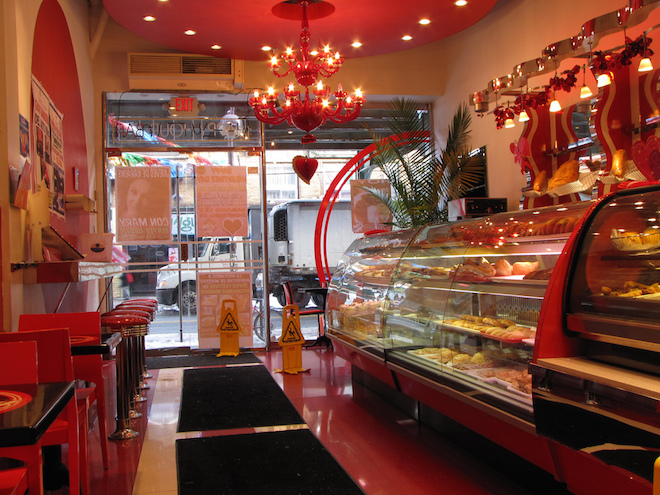How To Protect Your Restaurant From Common Food Vendor Issues

Here are some of the most common restaurant food vendor issues.
Is your food quality good? Hopefully, your answer is yes, because the quality of your food has a major impact on whether customers will return to dine at your restaurant.
Your high quality food comes through a distribution channel that connects you with your food supplier. Choosing a quality vendor is key to the success of your restaurant. Having a reputation for poor quality food can destroy your restaurant’s credibility.
In the restaurant industry, it is vital that you have a good relationship and communication strategy with your food vendors. Establish a solid working relationship and be aware that the wrong partnership could damage your restaurant.
In this blog post, you’ll find suggestions on how to protect your restaurant from common food vendor issues and set your relationship on the path to success.
Hire the Right Vendor
Some restaurants have difficulty choosing the right vendor. You should think about hiring a food supplier in much the same way you think about hiring your restaurant’s staff. (tweet this) You’ll want to find a trustworthy vendor you feel comfortable with. Don’t make your decision solely based on price; sometimes you do get “what you pay for.” Here are some tips for hiring a reliable vendor:
- Make sure your supplier has impeccable references. Ask the vendor what restaurants they serve and contact the restaurants directly.
- Taste the product before committing. Again, the cheapest vendor isn’t always the best vendor. Look at the quality of their food. Check their service record. Are they reliable, and will they provide you with consistent service?
- Inquire about their meat and produce packing dates. Slaughter date, packing date and shipping date are terms you’ll want to be familiar with when it comes to meat packing. This information is critical to ensure you have the freshest meat possible. You’ll also want to know about the transit time for your fresh fruit and vegetables to ensure you don’t end up with overripe produce.
- Don’t hire too many suppliers. (tweet this) You’ll need several, but keep them to a minimum. Processing too many invoices wastes your time.
- Visit the vendor’s warehouse. Do they have sufficient room and safe storage for both dry and cold goods? Are they taking steps to protect the food from contamination? “Best-in-class foodservice distributors go to great lengths and expense to protect the products they deliver,” says Steve Potter, senior vice president of industry relations for the International Foodservice Distributors Association (IFDA), a trade association.
Negotiate the Best Deal
When shopping around for a vendor, ask for price lists. Compare their prices as well as their references. When bartering for a better price, never accept their first offer.
Once you’ve picked a vendor, get everything in writing and leave nothing to chance. Don’t settle for their first price. You might find there is room for negotiation.
Take care of the delivery schedule. Some restaurants have issues getting their inventory in a timely fashion. Make sure your vendor knows your schedule and when you need your items. Tell them what time of day they should deliver your product. It will be difficult for you to receive and inventory items during peak meal times.
Negotiate your payment terms. Will your bill be due upon receipt or in 30 days? There is room to negotiate your terms.
Before you agree to split cases or special order items, make sure you understand if there are additional charges for these items. Clear this up so there are no misunderstandings and exorbitant costs for you. Ask your vendor to itemize special charges so you can find ways to economize. For example, you might order more products with each delivery.

How are your processes for delivery?
Process Your Delivery Accurately
Receiving your food inventory in a proper manner takes time and attention. You’ll have more success if this task falls to one-two people who really know your kitchen and your menu. This helps keep things under control and items processed with consistency.
As your products arrive, check the quantity. Do you have what you ordered? Do you have what they show on the invoice? Check your product weights and counts, too. Look over the costs per item on your invoice. Do they match your order and what you expected? Do the line items add up correctly?
Check your inventory thoroughly. Does the quality of the vendor’s goods match your desire for a quality product? Don’t save a few pennies and accept an inferior product that your restaurant’s customers will notice.
Processing your delivery accurately and precisely helps you avoid problems with your vendor, and it helps you avoid laborious paperwork later on.
Deal with Damaged Product
We already discussed the importance of finding a distributor with high quality products. But, what happens when you order fifty pounds of cheese, and it arrives spoiled and moldy? You want to be sure that your vendor will take care of the problem.
Some vendors refuse to refund or replace your damaged items once you’ve signed the invoice. Don’t sign it until you’ve checked everything.
Make sure your vendor guarantees issues with damaged or unusable products and takes care of you by providing new product (or a refund) in a timely manner. Ensure that the steps for this are put forth in your contract.
Plan Your Ordering Strategy
Do you need a vendor rep at your restaurant every week taking orders? This can add to your costs. If you fax your orders or place them online, you can potentially reduce the cost of your inventory items. When you eliminate order taking at the restaurant, you eliminate this cost on the vendor’s end resulting in lower mark-ups.
Reduce Your Weekly Deliveries
Another common vendor issue relates to your weekly deliveries and bottom line. Don’t let your vendor talk you into weekly deliveries if you can get by with fewer. If you have the storage available, try reducing your deliveries. This can reduce your vendor’s cost which might be reflected in your prices.
Ask for Audit Privileges
If you are curious if the prices you are paying are fair, include audit privileges in your vendor agreement. This allows you to review the invoices from the producer to your vendor and allows you to track actual costs on your inventory.
Maintain a Good Relationship
Sometimes the relationship between a restaurant and its supplier takes a negative turn. This is another common food vendor issue that can be avoided.
A good relationship between restaurant owner/manager/chef and food vendor is based on communication. You want your supplier or rep to be on your side and lobby for your needs. Schedule phone or in-person meetings with your supplier. Invest in your relationship, and your supplier will be more likely to work out your problems and issues.
Finding a vendor that compliments your restaurant is an integral part of your business. Follow the steps outlined in this post to avoid some of the common problems that plague the vendor/restaurant relationship, and you will help your restaurant create the best possible dining experience for your customers.
Have you had an issue with a food vendor? How did you solve it? We look forward to hearing your comments.
Images: m01229 & momentcaptured1

It is a wonderful article. A restaurant sets a high standard for its food quality and ensures that customer receive the same quality with every meal serving quality food can earn your restaurant a good reputation and compel your customers to return, but most important a restaurant must have a website. To make website for your restaurant you can visit http://bistroservices.com/
The most important component in any business relationship is trust. Find a supplier that understands your business, that is knowledgeable about the products they carry, and really knows the restaurant business. Pick a partner that you can trust!
Finding ways to reduce the time, energy, and expense in procurement is beneficial to all involved. Restaurants that streamline those redundant tasks can devote the time to developing your staff and focusing on those issues that build and enhance your brand.
Finally the three best ways to get better pricing and reduce your costs:
1. Pay on delivery, have your invoice amounts deducted directly from your operating account. Many distributors have the technology to debit your account at the time of delivery reflecting credits at the same time. Not only does that reduce time on your end but it reduces costs for the distributor. Additionally, your disbursements can be automatically sent to your accounting software eliminating the need to key punch every invoice.
2. Reduce your deliveries. For distributors, deliveries are expensive and it’s not just the delivery that costs, pulling the product and putting it on the truck adds to the distributors costs which ultimately add to yours. One way to think of it is to think about a restaurant that serves 150 people at one time versus 50 people three times, same revenue more expense.
3. Consolidate your purchases, having too many suppliers doesn’t really save you money. Distributors essentially pay the same for product with the primary differences being freight. Accordingly, distributors in the same market are going to pay the same freight from like manufacturers. The distributors generally know which way the market is headed on commodity items and most of the time lower prices on weekly items are just the normal ups and downs of the market. This is particularly true of high ticket protein items. When you partner with your supplier they can pass along the differentials instead of keeping them as leverage against their competitors.
Thank you for allowing me to comment.